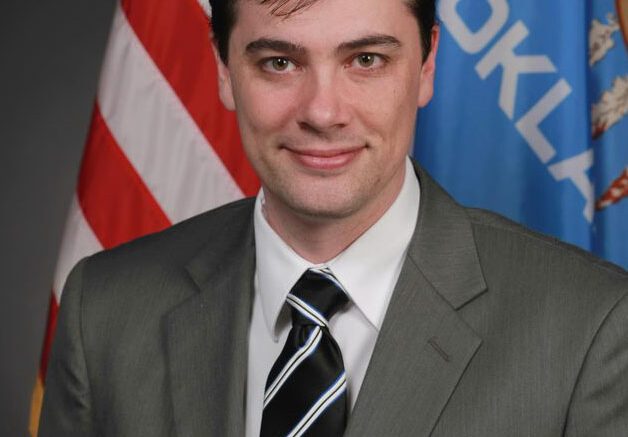It’s a program so effective that other states are seeking to copy it. It was featured on the local news last week as News 9’s Alex Cameron took his cameras inside the headquarters of Oklahoma’s new, unified IT entity. Cameron’s story, entitled “Keeping the State of Oklahoma Secure Against a Cyber Attack,” captured footage from the state data center and one of its situational awareness centers.
The story features footage from the center’s real-time network monitor, a big board straight out of the movie War Games, which tracks potentially hostile incoming Internet traffic from sources around the world. Cameron’s footage showed the foreign probes, in real time, while they actually occurred.
It’s a must-see story which you can view at hd31.org/738.
The state is now in a position to defend itself against these thousands of attacks; to analyze the information relating to the attacks; and, to provide the findings to other Oklahoma entities which may be vulnerable, other state governments and the national government.
Here’s the fascinating twist to the story.The state’s monitoring system depends on input from multiple IT security products; however, just a few months ago, the state didn’t have access to the technology which ties the data from these products together. The state needed new software to combine these data sources into actionable output.
IT officials realized that they would have to develop this product themselves.
Who was the individual responsible for this task?
It was one of the department’s interns.
In the ever-evolving world of IT, and within the rapidly-changing state IT department, it’s the newest employees, even the interns, who sometimes understand the newest technologies the best.
In this case, one of the state’s prized IT assets, a program now sought after by other states, was developed by an intern whose principal compensation — was pizza.
In putting their faith in some of their newest employees, IT department supervisors demonstrate an understanding of the highly fluid technology field; are showing that they are willing to act quickly and decisively; and are willing to do what is necessary to get things done. It’s an MO not characteristic of a state government where necessary new project deployments such as this routinely take months, if not years, to accomplish.
The state’s continued IT success will greatly depend on those who have a knowledge of the new, more effective, and ever less expensive technologies.
Here’s the problem: these individuals are highly sought after by private sector businesses which can afford to pay much more than the state.
Fortunately, the Legislature has created a vital tool which will greatly assist the state in this regards.
The Legislature has recently enacted “retirement system portability,” a key best practice from the private sector which allows state employees to take their retirement package with them when they leave the employment of state government.
The state’s new, unified IT entity will greatly benefit from this reform as high-performing IT employees can serve the taxpayers for a few years, then move on to better pay in the private sector while keeping their retirement plan intact.
No longer are those employees trapped in the golden cage, a system with great health and retirement benefits but completely unable to pay them what they are worth. Instead, they can participate in the time-honored tradition of service to the taxpayer, while honing their skill set, and then moving on to the private sector where they will be well rewarded for their abilities.
It’s a vital reform, a long time in the making and one which will have a far-reaching impact for the better.
Thank you for reading this article. Your interest and input are much appreciated. Please do not hesitate to email Jason.Murphey@hd31.org with your thoughts and suggestions.




Be the first to comment on "Opening the door to the golden cage"